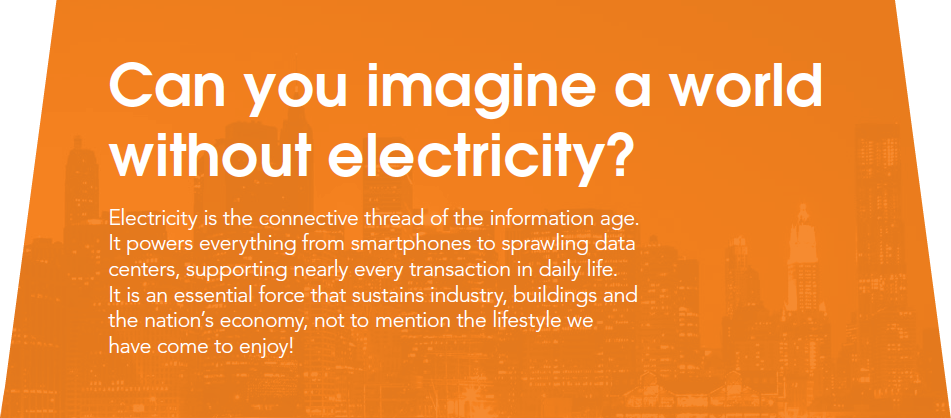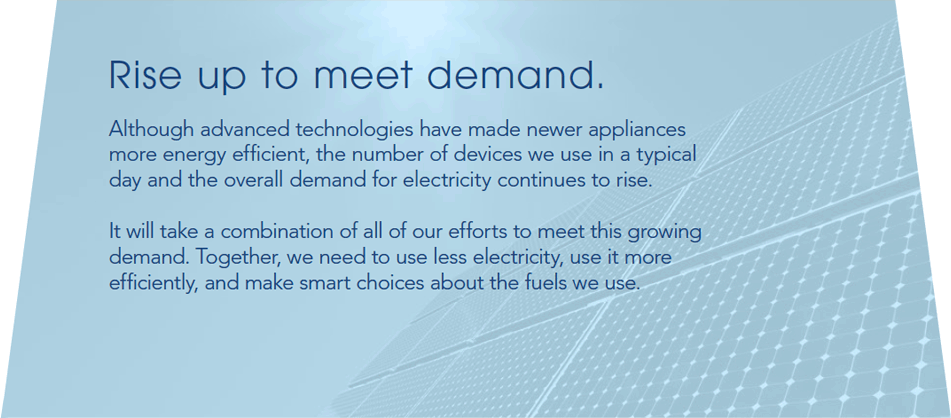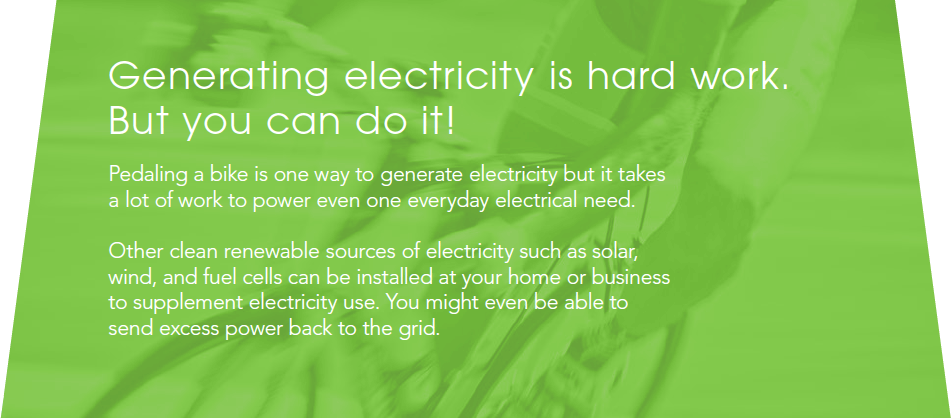-

Energy is the ability to do work.
-
Everything we do involves energy

Energy comes in many different forms. Light, motion, and heat are just a few of the many different forms of energy. Each type falls into two categories–potential and kinetic energy.
Potential Energy
Chemical, gravitational, mechanical, and nuclear energy – is stored energy. From the food you eat to batteries, rubber bands and hydropower, these are just a few examples of potential energy.
Kinetic Energy
Electrical, heat, light, motion and sound energy – is hard at work. Think of x-rays, sunshine, or ocean waves.
-
Energy cannot be created or destroyed

While you can’t make energy, you can change it from one form to another.
A toaster transforms electrical energy into heat to warm a slice of bread. When you eat the toast, your body changes the bread’s chemical energy into mechanical energy, which it uses to run, bike or toss a football.
Life as we know it in the United States is possible because we have learned how to change energy from one form to another, letting it do the work for us so that we may enjoy a more comfortable lifestyle.
-

Can you imagine a world without electricity?
Electricity is the connective thread of the information age. It powers everything from smartphones to sprawling data centers, supporting nearly every transaction in daily life. It is an essential force that sustains industry, buildings and the nation’s economy, not to mention the lifestyle we have come to enjoy!
-

Rise up to meet demand
Although advanced technologies have made newer appliances more energy efficient, the number of devices we use in a typical day and the overall usage of electricity continues to rise.
It will take a combination of all of our efforts to meet this growing demand. Together, we need to use less electricity, use it more efficiently, and make smart choices about the fuels we use.
-

Generating electricity is hard work. But you can do it!
Pedaling a bike is one way to generate electricity but it takes a lot of work to power even one everyday electrical need.
Other clean renewable sources of electricity such as solar, wind, and fuel cells can be installed at your home or business to supplement electricity use. You might even be able to send excess power back to the grid.

- Sit on the bike and start pedaling.
- The more you pedal, the more power you will generate*.
- The bulbs will light up and track your progress.
- To win, be the first to light up the big bulb at the top!
*The actual amount of energy generated will depend on your physical strength and the amount of time you pedal.
How many watts does it take to...
| Make coffee using a coffee maker | 1300 W |
| Run a toaster oven | 1500 W |
| Play music on a stereo | 450 W |
| Watch an LED TV | 60 W |
| Play on a game console | 40 W |
| Use a curling iron | 1500 W |
| Operate a desktop computer | 1300 W |
| Run an inkjet printer | 10 W |
Did you know?
Riding this bike for one hour could generate enough electricity to...
- Operate a window air conditioner for about 11 minutes.
- Heat water for a 30–second shower.
- Operate the lights in your house for 40 minutes or so.
- Operate a LED TV for about 160 minutes.
-

Did you know? Electricity is a secondary source of energy.
Primary sources such as natural gas, coal and solar, can be converted into a secondary energy source like electricity or hydrogen and can be stored, moved and delivered more easily.









